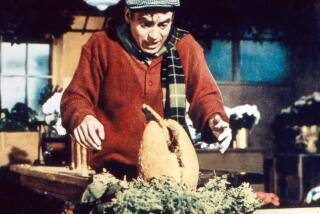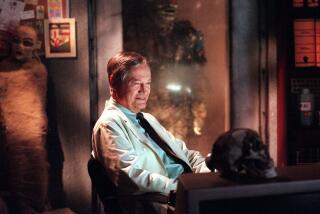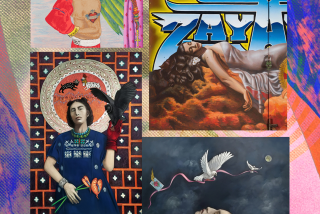Artist worked in assemblage, film, sculpture
Bruce Conner, a Bay Area artist who used sculpture, drawing, film and photography to explore mortality and other cosmic mysteries, died Monday at his home in San Francisco. He was 74.
The cause was complications from a liver condition, according to his art dealer, Michael Kohn.
Throughout his career, Conner moved from one art form to another, starting in the 1950s with collage sculptures known as assemblage that he made of junk, castoffs and debris. He next concentrated on art films crafted from existing footage that he edited together. He moved on to art photography and later to delicate ink blot drawings.
“Conner was the most important West Coast artist of his time, but he defied categories,” said museum curator Peter Boswell, who organized the first major survey of Conner’s work in 2000. He was unfailingly countercultural and changed his methods often, in part because “he mistrusted success,” Boswell said of Conner. “He viewed it as evidence of selling out.”
The theme of the work never changed, however. “Bruce looked at the interplay between good and evil, dark and light,” Boswell said. “It runs through all his work.”
One assemblage, “Anniversary Greetings” from 1963, includes part of a woman’s stocking, a blatant “girlie picture” and scraps of sentimental greeting cards in a mix of “nostalgia and dark memory,” Kohn said.
Other sculptures suggest shrines. In “July George” from 1962, a journal, a ball and other well-worn objects imply personal possessions. Conner’s shrine-like works recall “an altar built in observance of the Day of the Dead,” Times art critic Christopher Knight wrote in a 2000 review of a Conner exhibit. “There amid the decay, the maw of death yawns wide. As the only cogent response, the artist invites us to luxuriate in the . . . stuff of life.”
In the late 1950s Conner made “A Movie,” a 12-minute film that critics have praised as an art film classic. It is constructed from stock industrial footage, Hollywood clips and other pre-existing images of disaster, both natural and man-made, failed rescue attempts and carnage, interrupted by an ominous title card, “The End,” long before the film is over. The film’s nonstop show of destruction has an unexpected effect. “Death gives life meaning,” Knight wrote of “A Movie.” This “spiritually potent” theme runs through all of Conner’s art, Knight observed.
Another of his most admired films, “Report,” from the late 1960s, replays footage of the assassination of President Kennedy for a mind-numbing effect that raises questions about memory and emotion.
From film Conner moved to “photograms,” which he made by placing his own body in front of photographic paper and shining light on it. The results are large, ghostly images.
“Sound of Two Hand Angel,” a photogram from 1974, shows Conner emerging from darkness, his body seemingly made of light.
His fascination with the mystical began at an early age. Conner, who was born Nov. 18, 1933, in McPherson, Kan., was 8 when he had a vision of himself in an out-of-body experience. It was the kernel that grew into an artist’s quest.
He earned a bachelor of fine arts degree at the University of Nebraska and attended the art school at the Brooklyn Museum of Art. In 1957 he moved to San Francisco, where his friends included beat-era poet Michael McClure and painter Jay DeFeo. In the early ‘60s, Conner lived briefly in Mexico City, where he experimented heavily with hallucinogenic drugs, Boswell said. Years of drugs and alcohol contributed to a liver disease he developed in the mid-’80s.
Critical success came early and continued. In the ‘60s, Conner’s work was included in “The Art of Assemblage,” an exhibit at the Museum of Modern Art in New York City. He was included in several shows at the Whitney Museum of American Art, among them “Beat Culture, 1950-1965” in 1996. A retrospective, “2000 B.C: The Bruce Conner Story Part II,” opened in 2000 at the Walker Art Center in Minneapolis, where Boswell was a curator. It traveled to the De Young Museum in San Francisco and the Museum of Contemporary Art in Los Angeles.
Conner occasionally taught courses, including filmmaking at San Francisco State in 1976 and “The Art of Assemblage” for UCLA Extension in 1973.
His art is in the collections of the Guggenheim Museum, the Whitney Museum of American Art, the Los Angeles County Museum of Art and the San Francisco Museum of Modern Art, among others.
Survivors include his wife, Jean, son Robert and a granddaughter.
--
--
On latimes.com
Examples from a life in art
To see more of artist Bruce Conner’s work, go to latimes.com/conner.
More to Read
The biggest entertainment stories
Get our big stories about Hollywood, film, television, music, arts, culture and more right in your inbox as soon as they publish.
You may occasionally receive promotional content from the Los Angeles Times.










